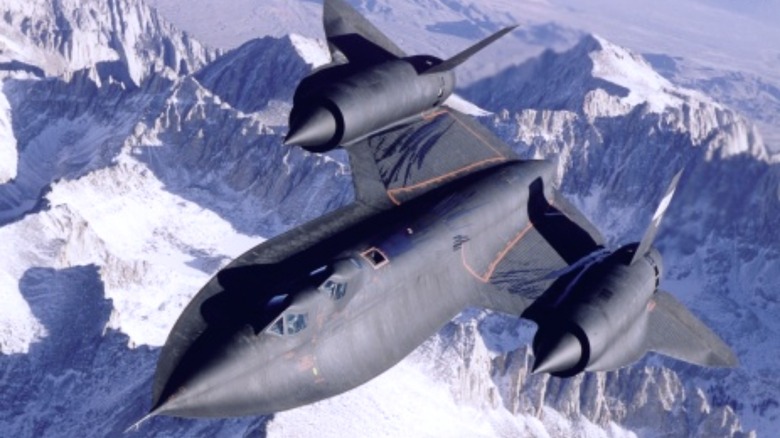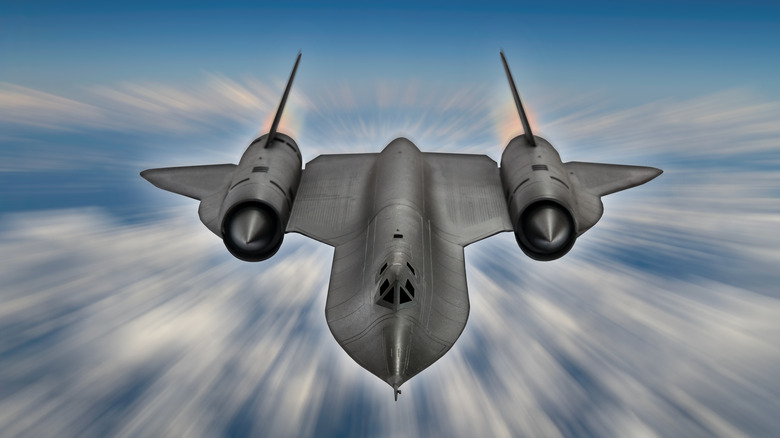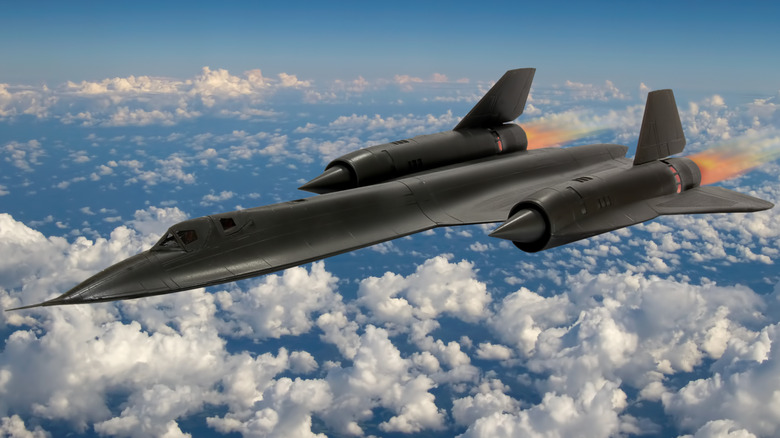The Biggest Strengths And Weaknesses Of America's SR-71 Blackbird
The SR-71 Blackbird is one of the United States' most recognizable and iconic aircraft. Its design is impressive, and while the U.S. only built 32, it remains a favorite of hobbyists and enthusiasts. The SR-71 began development in the early 1960s and entered the inventory in 1966, only two years after its first flight. It was a reconnaissance aircraft capable of reaching speeds in excess of Mach 3.2 (2,455 mph), making it the fastest air-breathing manned aircraft ever produced.
The supersonic airplane was legendary throughout its operation, which began in 1966 and ended for the U.S. Air Force (USAF) in 1989. The USAF briefly took it out of mothballs in 1998 before handing it over to NASA, which operated it for research purposes until 1999. Since then, you can find SR-71s in 25 museums, with the record-setting final flight of the aircraft housed at the Smithsonian Air and Space Museum. Lt. Col. Joseph Vida flew the plane from Los Angeles to Washington, D.C., in one hour, four minutes, and 20 seconds, averaging 2,124 mph.
Throughout its 24 years of operation, the SR-71 never crashed from enemy fire, though the U.S. lost a dozen in accidents. With more than 2,800 hours of operational flight time, the SR-71 successfully conducted intelligence, surveillance, and reconnaissance (ISR) missions supporting operations throughout the Cold War. None of the many surface-to-air missiles (SAM) fired at them hit an SR-71. This was mainly due to the aircraft's incredible speed and other capabilities, of which it had many.
The SR-71 was an absolute beast
The SR-71 was built for speed, and it achieved this via two Pratt and Whitney J58 turbojet engines with large inlet shock cones. These enabled the aircraft to reach Mach 3, which the SR-71 did regularly. Speed wasn't the SR-71's only feature — it could reach an altitude of 85,000 feet and higher. This is more than twice the average cruising altitude of a passenger jet, which offers advantages. When the SR-71 received a target lock from a SAM site, all it had to do was increase speed and altitude to outfly the missile, meaning it didn't require chaff or other countermeasures.
The aircraft boasted excellent gas mileage, though it did need to significantly reduce speed and altitude to refuel mid-air. This caused an interesting issue due to the rapid change in heat. The aircraft's loose-fitting panels covering the fuel tanks would result in fuel leaking, leaving a vapor trail behind the aircraft. The SR-71 was designed with this issue in mind. While many believe it's a design flaw, it's an innovative way of handling the problem of metal shrinkage from high to low-temperature variation.
Because of the external stresses on the aircraft, the SR-71's outer layer was made entirely out of titanium, which withstands temperatures over 3,000 degrees Fahrenheit. This also gave the Blackbird its signature look. On top of all these features, the SR-71 had a reduced radar profile due to its unique construction, making it harder for radar systems to locate.
There were some limitations that weakened the aircraft
The SR-71's ISR capabilities made it an ideal platform for gathering intelligence. While much of this equipment remains classified, it's known that the SR-71 could photograph 100,000-sq-mi in an hour. It also collected signals intelligence (SIGINT) and other information through various sensors — it was a true spy aircraft. While undoubtedly valuable to reconnaissance efforts, the SR-71 wasn't without problems, most of which came from its intense operational environment and mechanical complexity.
Because the SR-71 flew at such high speeds and altitudes, its 2-person crew was required to wear specialized spacesuits to operate the aircraft. Additionally, the SR-71 featured a life support system to accommodate oxygen, pressure changes, and temperature to keep the pilots safe from their operational environment. This also required specialized escape equipment for ejection systems, as oxygen and temperature control were necessary to keep an ejected pilot from succumbing to the elements.
The SR-71's high-speed capability came with some restrictions, as it was prohibited for the aircraft to exceed 1.5 g or a 45-degree bank at Mach 3 and higher. In addition, the aircraft was limited to an operational temperature of 800 degrees Fahrenheit, though part of the SR-71 far exceeded that limit. Cost was also a limitation, though they're comparatively cheaper than modern aircraft — an SR-71 cost the government a mere $34 million. Despite these extreme limitations, the SR-71 remained one of the U.S.'s most successful reconnaissance aircraft and a favorite of enthusiasts worldwide.


